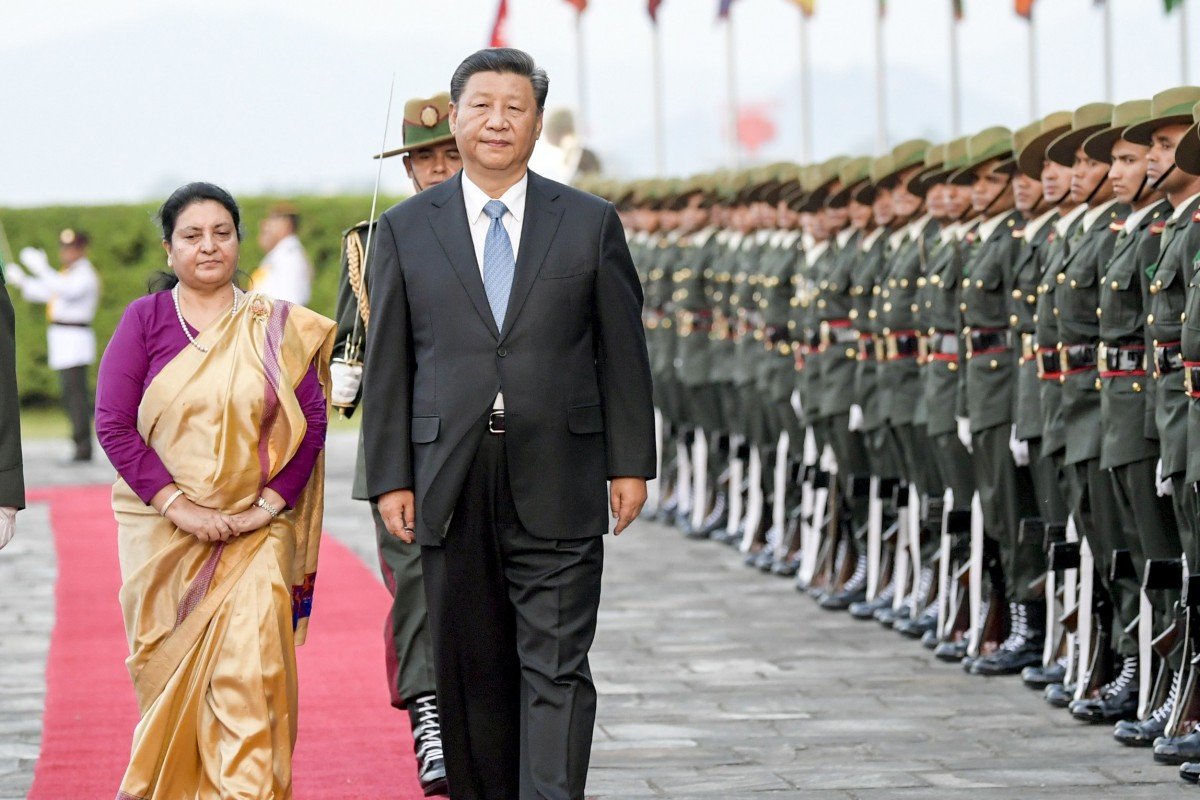
(TibetanReview.net, Nov13’19) – The official position of China and Nepal is that the two countries do not have any border dispute following the signing of a border agreement in 1961. But on Nov 11 angry protesters in Nepal burned effigies of Chinese President Xi Jinping after a recent government report indicated that Beijing had encroached on 36 hectares of Nepalese land, roughly the size of 26 football fields.
The campaigners, mostly young protesters, shouted slogans and held placards reading “Go back to China!” and “Return Nepali land” in multiple districts across the country, reported the scmp.com Nov 12.
A document released by Nepal’s Survey Department in early November showed that four districts sharing a border with Chinese ruled Tibet – Sankhuwasabha, Rasuwa, Sindhupalchowk and Humla – were seen losing territories as Beijing expanded its road projects.
The government data were further reported to suggest that Nepal stood to lose a further several hundred hectares of land to China.

Nepal’s aim in releasing the map had nothing to do with China. Rather, it was in response to India’s release on Nov 2 of its map which was alleged to claim a 372-square-kilometre (144-square-mile) border region, known as Kalapani in Nepal, as part of the northern Indian state of Uttarakhand.
The Indian move sparked furious street protests and opposition from Nepal’s government, forcing New Delhi to announce there was no change in the status quo regarding the border divisions with Nepal. It explained that the updated map was meant only to clarify the areas surrounding Jammu and Kashmir region, the report said.
“The new map has, in no manner, revised our boundary with Nepal. The boundary delineation exercise with Nepal is ongoing under the existing mechanism,” India’s external affairs ministry spokesperson Raveesh Kumar was quoted as saying.
The protest against China took place just a month after President Xi Jinping made a landmark two-day visit to the country, the first tour by a Chinese leader to the Himalayan nation in over two decades.
According to Bhim Bhurtel, a former executive director of the Nepal South Asia Centre think tank in Kathmandu, the anti-Xi demonstrations were likely to become a thorn in Nepal-China relations.
“This is not essentially a border encroachment by China,” he was quoted as saying, adding that the latest unrest was only due to minor bilateral misunderstanding which emerged from decades-old agreements on who would have greater control over the maintenance of border posts.





